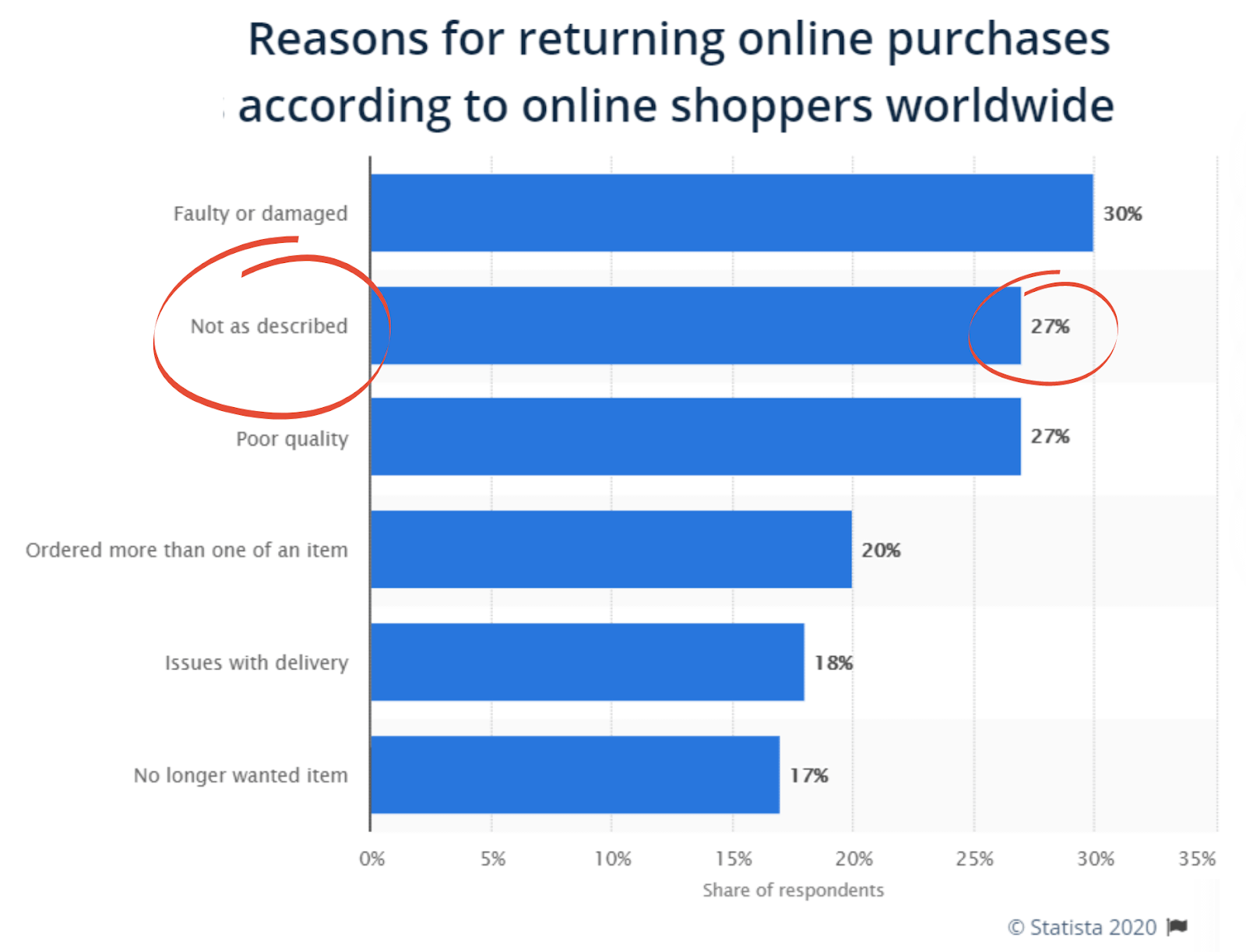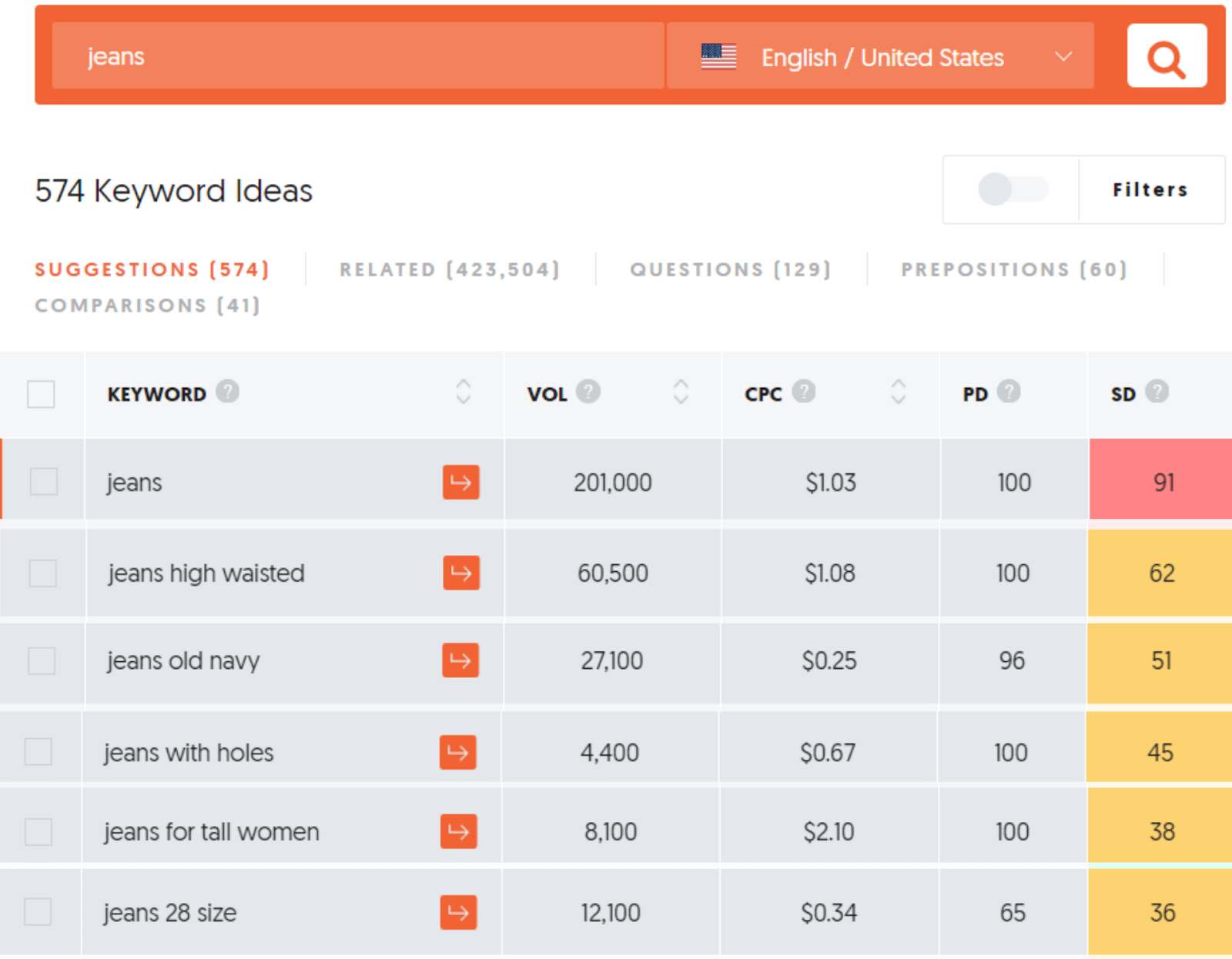7 Practices for Better Product Data

Product data heavily impacts your SEO, influences conversion on your website, and directly accounts for more than 27% of product returns in ecommerce.
It is the key to success for your brand.
However, there’s a lot to know about optimizing your product data.

What is Product Data?
Product data, or product content, is all the information provided by the business and the customers about the brand’s product. It usually includes, but isn’t limited to:
- Product descriptions, including technical specifications and marketing messages
- Media content, such as images, video, 360-degree photos, and augmented reality
- Business-related information, like pricing, stocking, shipping, and payment methods
- Customer content, including reviews, questions, and answers sections
Quality data are essential for an ecommerce store to succeed.
To help you take your product data to the next level, you should follow these 7 practices:
1. Mind Your Priorities
Sometimes, done is better than perfect.
Optimization is an ongoing task, especially when it comes to product content. To succeed, you should always stay focused on your top-priority list. Here is how you can leverage it:
- Define what product data is essential for a buyer, and what can be enriched later
- Focus on the product content for the top-performing products
- Organize your product database with a Product Information Management (PIM) system
Attributes are of extreme importance here. Not only for a user to read the necessary details, but to navigate through catalogs and land on a dedicated page. Product data governance within your content is a must. If you’d got gaps here, if navigation is broken — the most beautiful content won’t matter.
However, prioritization doesn’t end on the technical specs only. The best product data is the one that appeals to buyers’ sensations and desires. The essential contents in the product data sheet could vary across different industries:
- In fashion, size is king, and the materials are greatly important
- Among technical products, specifications are the key to success
- In cosmetics, naming specific color shades and videos are essential
- Among furniture and home appliances, dimensions are the must-have
- In food, ingredients play a major role, with the emphasis on allergens
Regardless, it’s useful to look outside for inspiration.
Compare customers’ review and Q&A sections at your site and other websites. It will give you an idea of what customers are looking for. To dive deeper, you can organize focus groups.
Remember that a new, unique type of content could become your competitive advantage.
2. Define Your Sales Channels
Depending on your company size and available resources, you should focus on 1-5 key marketplaces.
Amazon, for example, is by far the most popular and the most competitive marketplace in the world. There, the fight between sellers is rough and ruthless.
If you want to stand out on Amazon, you need to excel at both the way you run your ecommerce business and the way you present your products.
Amazon’s algorithms evaluate sellers on a variety of parameters. It rewards the winners with the highest rankings in the Amazon Buy Box.
Here are the main parameters which define your success on Amazon:
Business parameters
- Pricing
- Shipping time & costs
- Customer feedback on a product
- General seller’s rating
- Number of items available in stock
Product content
- Product name
- Bullets
- Description
- Product Images
- Details
- Keywords
Amazon retailers should constantly work on improving all these parameters.
When it comes to enhancing your product content, the secret lies in correctly organizing the data.
Being able to communicate product data clearly and in a way that makes it easy for the user to navigate to the section or page with the information most relevant to them will separate your brand from the rest.
3. Deliver Professional Visuals
The human brain processes images 60,000 times faster than text.
Additionally, 90% of information transmitted to the brain is visual.
It’s much easier for the human brain to absorb images than text. This is something your brand should leverage in its messaging.
Showcase the product in context:
- Add the option to zoom in for greater detail
- Show dimensions & angles to provide deeper context
- Provide lifestyle images and show the product in action
- Share product details via a thumbnail gallery
When you’re using images, keep in mind that customers demand high-resolution and quality images.
However, uploading huge files could be quite dangerous. Bulky files negatively impact both SEO rankings and the user experience (since the site takes a long time to download).
Therefore, choose your image sizes wisely.
Using WERP format for your images instead of PNG or JPEG files will make your images two times smaller while keeping equal quality.
However, in today’s digital age, pictures won’t cut it.
Buyers like extensive visual content, such as 360º images, video tutorials and augmented reality.
You could also link user-generated photos directly to your store.
Whatever method or mix of methods you decide, be sure to utilize visual content in product data to appeal to your audience.
4. Meet Your Buyers’ Expectations
You should represent your product the same way across all the channels a customer may encounter. Advertisements, landing pages, catalogs, collections, and product pages all need to portray the product similarly and accurately.
Move away from vague or misleading visuals. Instead, provide 360-degrees photos, showcase products from different perspectives, and give the ability to zoom in for added detail.
Customers want as much information as possible, extending beyond images alone. That’s why retailers include shipping time range, product features, or prolonged expiration dates in their product data.
Even once you address these concerns, you can continue further on this path. You should analyze buyers, define target personas, and adapt all the product content to your audience.
It takes time, but it significantly boosts your product data strategy.
5. Optimize Your Product Data for SEO
If your product isn’t well-positioned in search engines, you’re losing one of the best marketing opportunities around.
Although there’s a lot to learn about search engine optimization (SEO), here’s a quick list of what you should constantly be doing:
- Regularly analyze your product pages and overall website performance with SEO tools
- Put keywords in titles, headers, image titles, image alt tags, navigation, and internal links
- Make descriptions keyword-focused, but don’t forget to appeal to users
- Prepare unique images and other visual content
Do a keyword search before writing any product description. Pay attention to long-tail keywords (specific, longer phrases), which usually have lower competition and bring more relevant traffic.
The major metrics to pay attention to are:
- Volume: Average number of queries
- Cost per click (CPC): Pricing of the advertising campaigns
- Paid difficulty (PD) and search difficulty (SD): Insights on the competition within searched keywords
Below is an example, researching the keyword “jeans” via Ubersuggest.

There are 201,000 search queries for jeans per month in the US, making the keyword extremely competitive.
If you get more specific and define the style, brand, or size, the competition will become much lower.
As a result, you will be able to attract a higher volume of people searching for exactly what your content is on.
However, be careful not to over-optimize your product data.
While searching, people will see the title, meta description, and possibly an image. So, make sure your site is still appealing to readers.
In this case, you could use details such as gender, age, material, purpose, styling, brand to make your keywords more specific.
Still, do not over-optimize your product data. While searching, people will see the title, meta description, and possibly an image. You should still make them appealing to readers.
6. Analyze Product Returns Data
Product returns can be a disaster for ecommerce businesses.
Return deliveries cost companies billions of dollars annually.
On top of that, returned products often can’t be resold.
Product return data is a game-changer for this costly problem.
By collecting data on all your company’s returns, you’ll be able to understand customer behavior, common reasons for product returns, and identify customers with highest return rates.
With this information, you’ll be able to improve product performance and know what information your customers need pre-purchase to prevent so many returns.
Gathering data in mass volumes like this is made possible through the use of automation tools.
By automating your returns process, you’ll be able to collect data on each return.
7. Automate Product Data Management
The more goods you sell, the more marketplaces you work with.
Selling your product through multiple channels means having to adapt to multiple product content requirements.
This could be a lot to keep track of manually.
To keep your product data organized and accessible for all departments, you should have a dedicated product data hub, a single source of truth for your product portfolio.
Having a single product data management system will benefit your company by
- Facilitating the speed to market
- Making the content team more productive, and
- Improving the overall customer experience.
However, creating a single source of truth for product content is challenging. The right system for you will depend on the size of your brand:
- Small Companies –> Content Management System (CMS)
- Growing Brands –> Enterprise Resource Planning (ERP) System
- Mature Businesses –> Product Information Management (PIM) System
When choosing a system, be sure to select one with product data syndication functionality to save yourselves from hundreds of hours of manual work when it comes to adapting your content to different marketplaces’ needs.
Final Thoughts
Product data analysis, testing, and improvements is an ongoing process that can be your key differentiator across the highly competitive world of ecommerce.
When it comes to creating product data content, explain how the product will benefit your customers.
- Will it make life easier?
- Will it resolve a challenge?
- Will it provide enjoyment?
- Will it create a sense of status?
Find a way to communicate that to the user through the screen.
By crafting unique persuasive descriptions, focusing on the target customer, and providing a better experience for your buyers, your business will flourish.



